How to Get a Logo Design Online: Ultimate Guide
Logo design creates a visual representation that symbolises a brand or business. It is a crucial aspect of branding as it helps convey a company's core values, identity, and personality. In today's digital age, getting a logo design online has become increasingly popular and offers several advantages.
The benefits of online logo design are numerous. Firstly, it is cost-effective compared to hiring a traditional graphic designer. Online platforms provide various design options, allowing businesses to choose from multiple templates and customisations. The process is also quick, with a fast turnaround time. Furthermore, online logo design often involves a collaborative process, enabling businesses to work closely with designers and provide valuable input.
To design a logo online, there are a few steps to follow. Firstly, defining the brand identity and understanding the target audience is essential. Then, research and gather inspiration to understand current design trends and competitor logos. Next, choosing a suitable online logo design platform is necessary. Once a platform is chosen, businesses can select a pre-existing design template or start from scratch. Customisation is critical, allowing companies to tailor the logo design to their needs. Finally, reviewing and finalising the design before implementing it is crucial.
Essential factors to consider in online logo design include simplicity and versatility. A logo should be easily recognisable and adaptable across different mediums. Colour is also vital; it can evoke certain emotions and convey the brand's message. Scalability is another important factor, ensuring the logo remains clear and legible at different sizes. Understanding the target audience and brand image is crucial to designing a logo that resonates with the intended consumers.
While designing a logo online, there are common mistakes to avoid. Overcomplicating the design can make the logo confusing and challenging to understand. Ignoring scalability may result in a logo that loses its impact when resized. Using stock images can lead to generic designs that need more originality. Finally, more than brand consistency is required to ensure the logo's ability to represent the brand's identity accurately.
Key takeaways:
- Online logo design is cost-effective: Getting a logo design online can save money compared to hiring a professional designer. It is an affordable option for businesses of all sizes.
- Comprehensive options: Online logo design platforms offer diverse templates, fonts, and design elements. This allows businesses to create a logo that aligns with their brand identity and stands out.
- Quick turnaround time: Online logo design enables businesses to receive their design quickly. With efficient online tools and collaboration, the process is streamlined, saving time and allowing companies to launch their branding efforts sooner.
Table of Contents
What is Logo Design?
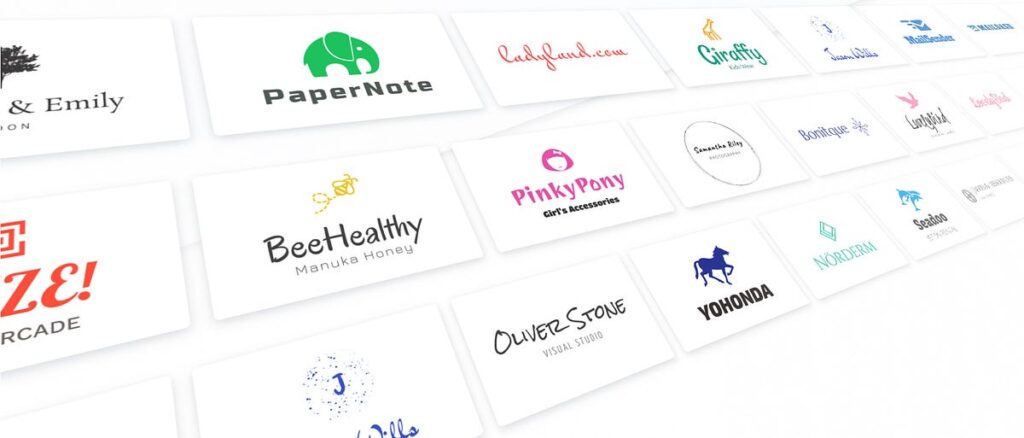
Logo design creates a visual symbol or mark representing a company, brand, or organisation. It is an essential aspect of branding and serves as a visual identity for businesses. A well-designed logo is memorable and versatile and communicates the essence and values of the brand.
Here are key points to understand logo design:
- Purpose: A logo is the face of a brand and aims to create recognition and build trust with the target audience. It should convey the brand's personality, values, and message visually appealingly.
- Elements: A logo consists of various components, including typography, imagery, colours, and shapes. Each part is carefully chosen to align with the brand's identity and target audience. For example, a playful brand may use vibrant colours and whimsical fonts, while a luxury brand may opt for a minimalistic design and elegant typography.
- Simplicity: Simple logos tend to be more memorable and versatile. Avoid cluttering the design with unnecessary details or complex imagery. A simple yet impactful logo can leave a lasting impression.
- Branding Consistency: A logo should be consistent with the company's overall branding. It should match the brand's tone, style, and values to create a cohesive visual identity across various marketing materials.
- Scalability: Logos must be scalable to different sizes and mediums without losing clarity or legibility. They should look as good on a small business card as on a giant billboard.
Pro-tip: When designing a logo, thoroughly research the target audience, competitors, and industry trends. This will help you create a logo that stands out and resonates with the intended audience. Remember, a well-designed logo has the power to make a solid first impression and leave a lasting impact on consumers.
The Benefits of Online Logo Design
Unleash your brand's potential with online logo design! Explore the untapped benefits that come with this innovative approach. Online logo design offers many options, cost-effectiveness, quick turnaround time and fosters a collaborative process. It is a game-changer in branding, allowing you to create a logo representing your brand's identity. Take advantage of the advantages that await you in this exciting sub-section exploration!
1. Cost-Effective
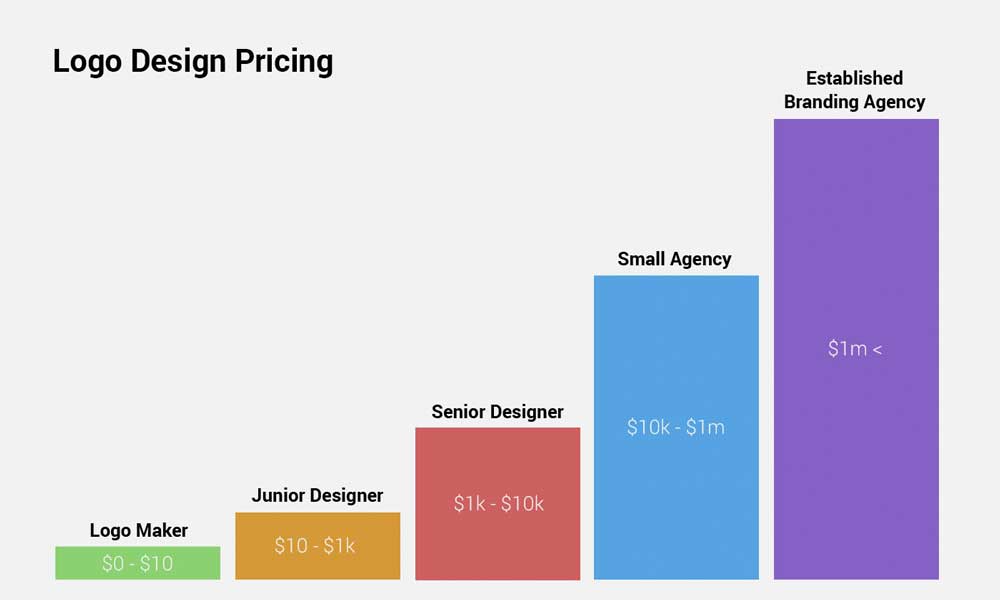
One of the key benefits of online logo design is its cost-effectiveness. Here are some reasons why:
- Affordable options: Online logo design platforms offer a range of affordable packages and pricing plans to suit different budgets. You can choose a plan that fits your financial constraints, whether you're a small business owner or a freelancer.
- No additional costs: Unlike traditional logo design methods, online logo design doesn't incur extra charges, such as hiring a professional designer or purchasing design software. Everything you need is available on the platform, saving you money.
- Time-saving: With online logo design, you can create your logo quickly and easily without lengthy design processes. This saves you time and allows you to focus on other aspects of your business.
- Flexibility: Online logo design platforms provide a wide range of customisable templates and design elements that allow you to create a logo that reflects your brand identity. This flexibility reduces the need for multiple design revisions, saving time and money.
The emergence of online logo design has revolutionised the way businesses and individuals create logos. In the past, logo design was a complex and expensive process that required the expertise of professional designers. With the advent of online platforms, logo design costs have significantly decreased, making it accessible to businesses of all sizes. This has democratised the design process, allowing small businesses and startups to create high-quality logos without breaking the bank. Online logo design has empowered individuals and freelancers to showcase their brand identity through well-designed symbols. The cost-effectiveness of online logo design has opened up a world of possibilities for businesses and individuals alike.
2. Wide Range of Options
One of the significant benefits of online logo design is the wide range of options available to create a unique and customised logo for your brand.
| Logo Design Platforms | Numerous online logo design platforms offer a wide range of design templates, tools, and features to create a logo. Some popular platforms include Canva, Adobe Express, and Designhill. |
| Design Templates | These platforms provide a vast collection of pre-designed templates in various styles, industries, and themes. You can choose from different layouts, typography, and visual elements to match your brand's identity and vision. |
| Customisation Options | With online logo design, you can customise every aspect of your logo. You can change colours, fonts, and sizes and add or remove elements to make it truly unique and representative of your brand. |
| Access to Design Tools | These platforms provide a range of design tools and features to enhance your logo. To create a professional and visually appealing logo, you can experiment with different shapes, gradients, shadows, and effects. |
| Collaboration and Feedback | Online logo design platforms often allow you to collaborate with team members or share your design with clients for feedback. This collaborative process helps refine the logo and ensures the final design meets your expectations. |
The wide range of options in online logo design allows you to explore different styles, experiment with techniques, and create a logo that truly represents your brand. It will enable you to stand out from the competition and establish a solid visual identity for your business.
The wide range of options available in online logo design empowers businesses to create unique, professional, and visually appealing logos that effectively represent their brand. With the flexibility to choose from design templates, customise every aspect, and access collaboration features, online logo design offers an efficient and cost-effective solution for businesses of all sizes.
3. Quick Turnaround Time
One of the key benefits of online logo design is the quick turnaround time. Here are some reasons why a short turnaround time is advantageous:
- Efficiency: Online logo design platforms offer streamlined processes and tools for faster design iterations. Designers can quickly create and revise logo concepts, saving time compared to traditional design methods.
- Time-sensitive projects: In certain situations, businesses may require logos within a short timeframe, such as for events or campaigns. The quick turnaround time offered by online logo design allows companies to meet these deadlines.
- Competitive advantage: Launching a new brand or product quickly in a fast-paced business environment can give a company a competitive edge. Having a logo ready in a short amount of time enables businesses to capitalise on opportunities more swiftly.
- Client satisfaction: Clients often appreciate fast results, especially when they have urgent needs or projects. A quick turnaround time shows the commitment and efficiency of the designer or design platform, enhancing client satisfaction.
- Iterative process: Online logo design platforms allow easy collaboration and communication between clients and designers. This iterative process ensures that feedback is implemented promptly, resulting in a faster logo development cycle.
While the quick turnaround time is beneficial, maintaining quality is essential. Designers should still strive for visually appealing and impactful logos representing the brand.
4. Collaborative Process
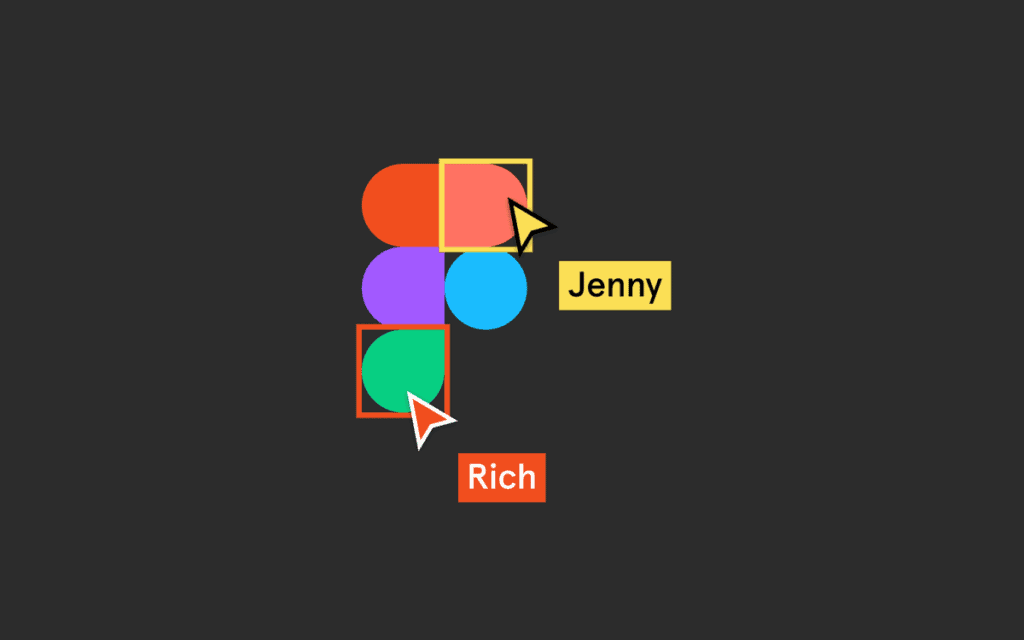
The collaborative process is essential to online logo design. It involves active participation and cooperation between the client and the designer to create a logo that effectively represents the brand's identity and resonates with its target audience.
Here are some key factors to consider in the collaborative process:
- Open communication: Clear and constant communication between the client and the designer is crucial. This allows for exchanging ideas, feedback, and revisions throughout the design process.
- Shared vision: The client and the designer should understand the brand's vision, values, and objectives. This alignment ensures that the logo design accurately reflects the desired brand image.
- Input from the client: The client's information and feedback are valuable in shaping the logo design. They can provide insights into the brand's preferences, target audience, and industry trends, which help the designer in making informed design decisions.
- Creative collaboration: Collaboration sparks creativity and encourages innovative thinking. The client and the designer can brainstorm ideas, explore different design concepts, and collaborate on refining the chosen design direction.
- Feedback and revisions: The collaborative process involves an iterative approach, where the designer presents initial design concepts to the client for feedback. Based on the feedback received, the designer makes revisions to the design until it meets the client's expectations.
- Timely response: Both parties should be committed to timely and prompt feedback. This helps to ensure efficient progress in the design process and avoid unnecessary delays.
- Mutual respect and trust: The collaborative process requires mutual respect and trust between the client and the designer. A strong working relationship can be established by valuing each other's expertise and understanding the goal of creating a successful logo.
The collaborative process in online logo design allows for a dynamic and interactive approach, ultimately resulting in a logo that reflects the brand's identity and resonates with its target audience. By fostering effective communication, shared vision, and creative collaboration, the client and the designer can create a logo that stands out and leaves a lasting impression.
The collaborative process has proven to be highly effective in online logo design. By involving the client in the design process, designers can better understand the brand and its objectives, leading to more successful logo designs. This collaborative approach has resulted in iconic logos synonymous with their respective brands. From Nike‘s swoosh to Apple‘s bitten apple, these logos have been created through a collaborative process that values the input and vision of both the client and the designer. The collaborative process in online logo design continues to evolve and adapt to new technologies and trends, allowing for an even more seamless and efficient collaboration between clients and designers.
How to Design a Logo Online
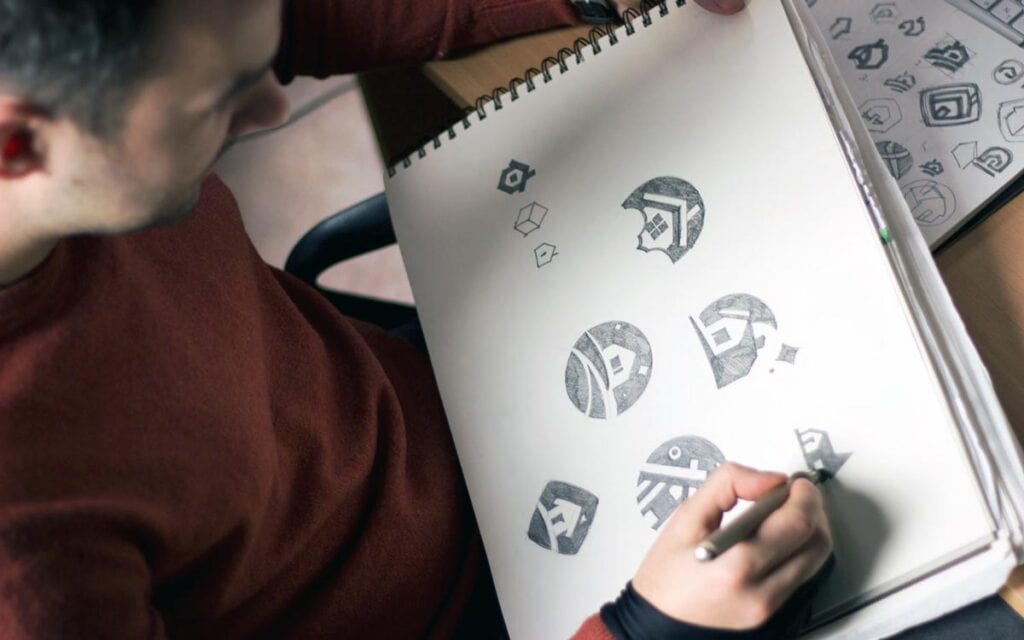
Designing a logo online can be an exciting creative journey. This guide will focus on creating a logo that accurately reflects your brand. Learn how to establish your brand identity, find inspiration from different sources, and choose the right online platform for logo design. Whether you create a logo from scratch or use a premade template, we will discuss how to personalise your plan and make it unique to your brand. Prepare yourself for the thrilling adventure of logo creation!
1. Define your Brand Identity
Defining your brand identity is a crucial step in logo design. It helps create a strong foundation for your logo to represent your business effectively. Here are the steps to define your brand identity:
- Know your business: Understand your business's purpose, values, and unique qualities. Determine what sets you apart from your competitors.
- Define your target audience: Identify your ideal customer demographic, including age, gender, interests, and preferences. This will help you tailor your logo to appeal to your target audience.
- Establish your brand personality: Consider the tone and style you want your brand to portray. Is it serious and professional, or fun and playful? This will influence the overall look and feel of your logo.
- Create a brand mission statement: Clearly define the mission and vision of your business. This will help you stay focused and ensure your logo aligns with your brand message.
- Research your industry: Analyse your competitors' logos and visual branding to identify trends and avoid similarities. This will help you differentiate your logo from others in your industry.
- Gather visual inspiration: Collect references such as colours, typography, and styles that resonate with your brand identity. This will help guide the design process and ensure consistency.
- Consider your brand values: Identify the core values that your brand represents. This will help you create a logo that reflects your brand's principles and beliefs.
- Keep it simple: Aim for a simple, clean design that is easily recognisable and memorable. Avoid clutter and excessive details that may distract from the core message of your logo.
Fact: According to a study, 59% of consumers prefer to buy products from brands they recognise, emphasising the importance of a well-designed logo in establishing brand recognition.
2. Research and Gather Inspiration
Research and gathering inspiration are crucial steps in designing a logo online. Below is a step-by-step guide on effectively researching and gathering inspiration:
- Analyse your brand: Start by understanding your identity and the message you want to convey through your logo. Consider your brand values, target audience, and the emotions you wish to evoke.
- Study competitors: Research your competitors' logos to identify common design elements and themes within your industry. Consider what works well and find ways to differentiate yourself by exploring unique design approaches.
- Explore design trends: Stay updated on current design trends to ensure that your logo feels modern and relevant. Look for inspiration from design blogs, social media platforms, and reputable design websites.
- Create a mood board: Compile images, colours, typography, and design elements that resonate with your brand. This mood board will be a visual guide during the logo design and inspire your creative direction.
- Seek inspiration beyond your industry: Look beyond your industry for fresh and unique ideas. Explore other visual art forms, nature, architecture, fashion, and cultures. Incorporating diverse influences can result in a more original and innovative logo.
- Sketch and brainstorm: Present your ideas by sketching rough logo concepts. Let your creativity flow without limitations at this stage. Brainstorm and explore different approaches, compositions, and symbols that align with your brand identity.
- Refine and evaluate: Narrow your sketches to a few promising concepts. Compare them against your brand identity and objectives, considering factors like simplicity, versatility, and uniqueness. Eliminate designs that do not align with your brand vision.
- Solicit feedback: Share your concept designs with trusted colleagues or individuals who understand your brand. Seek their feedback and insights to gain different perspectives. Use their input to refine and improve your design direction.
- Iterate and finalise: Based on the feedback received, further refine your logo design. Make necessary adjustments to elements like typography, colour, and composition. Test the logo's scalability across different platforms, ensuring it remains recognisable and legible at various sizes.
Remember, while research and gathering inspiration are essential, avoiding directly copying or imitating existing logos is important. Instead, draw inspiration from various sources to create a unique, memorable symbol representing your brand.
3. Choose an Online Logo Design Platform
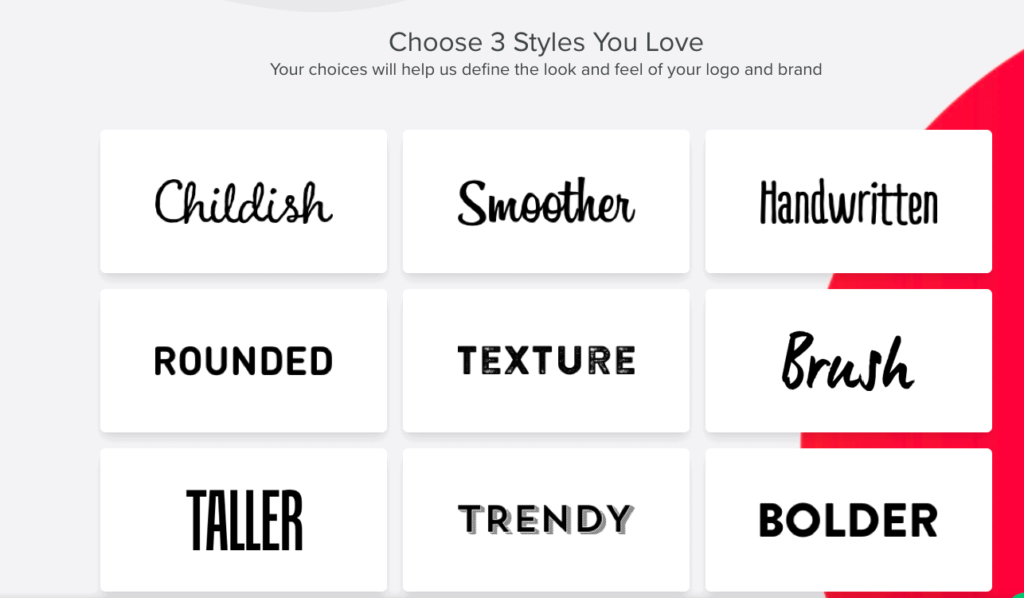
When designing a logo online, it is crucial to choose the right platform. You can follow several steps to ensure that you select the best online logo design platform for your needs:
1. Research and compare different platforms: Research and compare various online logo design platforms. Look for platforms with a good reputation, positive customer reviews, and a wide range of design options.
2. Consider your budget: Determine your logo design budget and choose a platform that offers pricing plans within your budget. Some platforms may offer free options, while others may require a subscription or one-time payment.
3. Evaluate design options: Look for platforms that offer a wide range of design templates and customisation options. This will enable you to create a unique and personalised logo representing your brand.
4. Check user-friendliness: Consider the ease of use of the platform. Look for platforms that have intuitive interfaces, easy-to-use tools, and drag-and-drop functionality. This will make the logo design process smoother and more enjoyable.
5. Review sample designs: Take the time to review sample designs created using the platform. This will give you an idea of the quality and style of logos that can be made using the platform.
6. Assess customer support: Look for platforms that offer reliable customer support. This can include email or live chat support, tutorials, FAQs, and other resources to assist you throughout the logo design process.
7. Consider additional features: Evaluate any other parts or services the platform offers, such as logo file formats, mockups, brand style guides, and social media assets. These features can enhance the overall logo design experience and provide added value.
Choosing the right online logo design platform is essential to create a professional and visually appealing logo for your brand. By following these steps and considering factors such as pricing, design options, user-friendliness, customer support, and additional features, you can make an informed decision and select a platform that meets your specific requirements. So, take your time to research and choose wisely.
4. Select a Design Template or Start from Scratch
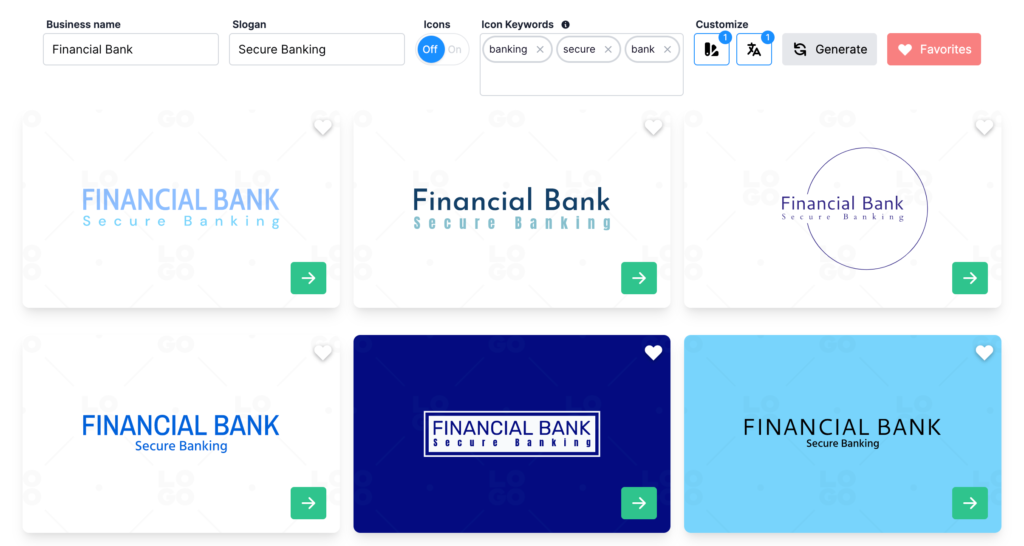
When designing a logo online, you can follow these steps to select a design template or start from scratch:
1. Define your brand identity: Before selecting a design template or starting from scratch, it's essential to have a clear understanding of your brand's identity and values. Consider the message you want your logo to convey and the emotions you want it to evoke.
2. Research and gather inspiration: Find inspiration from other logos in your industry or related fields. Take note of elements that appeal to you and could work well for your logo. This research will help you make informed decisions when selecting a design template or creating a logo from scratch.
3. Choose an online logo design platform: Various online platforms are available for logo design. Compare their features, pricing, and user reviews to select the forum that best suits your needs. Look for platforms that offer a wide range of design templates and customisation options.
4. Select a design template or start from scratch: Once you have chosen a platform, you can select a design template or start the logo design process. Design templates provide a convenient starting point, allowing you to customise elements such as colours, fonts, and layout to match your brand. Starting from scratch gives you complete creative freedom but requires more time and design skills.
5. Customise your logo design: Whether you selected a design template or started from scratch, it's essential to customise the logo design to make it unique and representative of your brand. Adjust colours, fonts, and other elements to align with your brand identity. Experiment with different variations until you are satisfied with the final design.
6. Review and finalise: Before finalising your logo design, carefully review it for any mistakes or inconsistencies. Make sure it looks good in different sizes and formats. Seek feedback from trusted colleagues or friends to ensure the logo effectively communicates your brand's message. Once confident in your design, save it in the required formats for various applications.
Following these steps, you can effectively select a design template or start from scratch when designing a logo online. Remember to consider your brand identity and the goals you want to achieve with your logo throughout the design process.
5. Customise your Logo Design
When customising your logo design online, follow these steps to create a unique and personalised logo:
- Choose the right design platform: Select an online logo design platform that offers customisation options and a wide range of design templates.
- Select a design template or start from scratch: Decide if you want to begin with a pre-designed template that can be customised or if you prefer to create your logo from a blank canvas.
- Customise elements: Modify the text, font, colours, and shapes to align with your brand identity. Ensure your details are simple and versatile, allowing for easy recognition and scalability.
- Add personalised touches: Add visuals or icons representing your brand or industry. This can include symbols, illustrations, or unique graphics that enhance your logo's visual impact.
- Experiment with layout and composition: Arrange the different elements of your logo design to create a balanced and visually appealing composition. Consider the positioning and size of each component to ensure clarity and readability.
- Review and refine: Take the time to review your customised logo design and make any necessary adjustments. Seek feedback from others to ensure your logo effectively communicates your brand message.
- Finalise your logo design: After the customisation, save and download your logo in the appropriate file format(s) for different applications and platforms.
Creating a customised logo online gives you creative control over your brand's visual identity. It enables you to tailor your logo to suit your brand personality, target audience, and industry. By following these steps, you can ensure that your logo stands out and effectively represents your brand.
Customising logos has become increasingly popular with the rise of online logo design platforms. These platforms offer a convenient and cost-effective way for businesses and individuals to create unique and professional logos. With customisable design templates and a wide variety of customisation options, designing a logo online has never been easier. The ability to customise every aspect of a logo, from the font and colour to the layout and composition, allows for endless creative possibilities. Whether you're a small business owner, a freelancer, or an aspiring entrepreneur, customising your logo design online empowers you to create a visual identity that accurately reflects your brand. It helps you stand out in a competitive market.
6. Review and Finalise
- Examine the visual elements of the logo: Take a close look at the colours, shapes, and typography used in the design. Check if they align with the brand's identity and convey the intended message effectively. Make sure that the logo is visually appealing and engaging.
- Consider scalability: Verify that the logo maintains clarity and legibility when resized to different dimensions. The logo must look good and remain recognisable, whether displayed on a website, social media profile, or billboard.
- Evaluate the logo's versatility: Assess if the logo can be adapted for various applications, such as different backgrounds, printing materials, or promotional items. The design should be flexible enough to be used across other platforms without losing impact.
- Seek feedback and opinions: Share the logo with trusted individuals who understand the brand and its values. Collect their feedback and ideas to gain valuable insights and perspectives. Consider their suggestions for improvement while staying true to the original concept.
- Ensure brand consistency: Maintain consistency with other brand elements, such as the tone of voice and visual style. The logo should align with the brand image and create a cohesive identity. It should also be recognised as part of the brand's marketing efforts.
- Make necessary adjustments: Based on the feedback and evaluations, make any required adjustments to the logo design. This may involve tweaking certain elements, refining the typography, or enhancing the overall composition. Aim to strike a balance between creativity and readability.
- Finalise the design: Once all the revisions and refinements have been made, finalise the logo design. Save the logo in different file formats and sizes for versatile usage across various platforms and media.
- Keep records of the design process: Document the design decisions, iterations, and any significant changes made throughout the review and finalisaRegardingis will serve as a reference for future adjustments or updates to the logo.
By following these steps, you can ensure that your online logo design is thoroughly reviewed and finalised, resulting in a logo that effectively represents your brand and leaves a lasting impression on your target audience.
Essential Factors to Consider in Online Logo Design
There are several important factors to consider regarding online logo design. This section will discuss the key elements that contribute to the effectiveness of your brand's visual identity. We will explore factors such as simplicity and versatility of the design, strategic use of colour, scalability, and alignment with your target audience and brand image. Let's explore these factors and discover the secrets to creating a winning logo!
1. Simplicity and Versatility
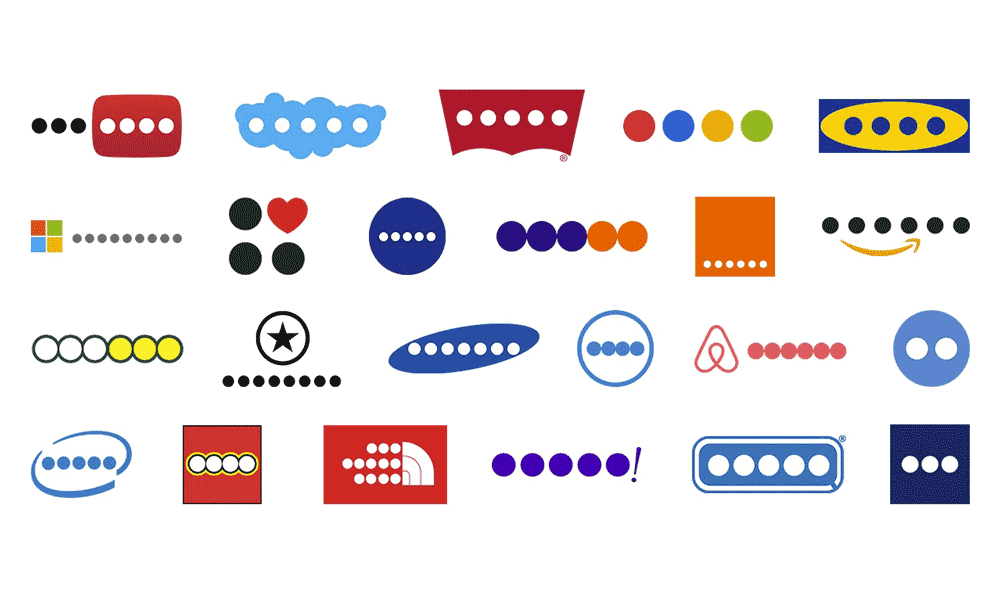
Regarding logo design, simplicity and versatility are essential factors to consider. A simple and versatile logo has numerous benefits and can effectively represent a brand in various contexts. Here are some reasons why simplicity and versatility are essential in online logo design:
- Audience recognition: A simple logo is more likely to be memorable and easily recognisable by your target audience. It allows for quick identification and increases brand recall.
- Adaptability: A versatile logo can be easily adapted to different sizes, formats, and mediums without losing its essence or readability. This ensures consistent branding across various platforms, such as websites, social media profiles, and print materials.
- Timelessness: Simple logos have a timeless appeal that can withstand the test of time. They avoid trends or complex design elements that may need to be updated quickly. This ensures that your logo remains relevant and doesn't require frequent redesigns.
- Visibility: A simple logo is often more visible and legible, significantly when scaled down or used in small spaces. Clean lines and minimal details make it easier for the logo to stand out and make a strong impression, even in crowded environments.
- Brand consistency: A simple and versatile logo can be easily incorporated into various branding materials, such as business cards, merchandise, and advertisements, while maintaining brand consistency. It provides a cohesive visual identity for your brand.
- Flexibility: A simple logo allows for versatility regarding colour schemes, backgrounds, and applications. This allows the logo to adapt to different contexts and create visual harmony with various brand elements.
- Professionalism: A well-designed, simple logo reflects professionalism and sophistication. Avoiding clutter and unnecessary details conveys a sense of confidence and trustworthiness to your audience.
Simplicity and versatility are crucial considerations when designing a logo online. They contribute to a memorable, adaptable, and timeless visual representation of your brand that can make a lasting impact on your target audience.
2. Use of Colour
Regarding logo design, colour is crucial in creating a visually appealing and impactful design. Here are some essential factors to consider:
- Colour psychology: Colours evoke certain emotions and can significantly impact a brand's perception. Red, for example, is often associated with energy and excitement, while blue conveys trust and professionalism. Choosing colours that align with your brand's values and desired emotional response is essential.
- Brand identity: The colours used in your logo should reflect your brand's personality and individuality. Consider the industry you're in and the target audience you want to attract. Bright and vibrant colours may be appropriate for a children's brand, while a luxury brand may opt for more sophisticated and elegant hues.
- Contrast and readability: Using contrasting colours can help make your logo visually appealing and ensure that it stands out. It's important to consider how the colours interact and appear in different sizes and mediums. Avoid using colours that blend or make the logo difficult to read or understand.
- Colour combinations: A well-thought-out colour palette is essential for a cohesive and balanced logo design. Consider using complementary colours opposite each other on the colour wheel for a harmonious effect. Analogous, adjacent colours can create a sense of unity and harmony.
- Cultural considerations: Different colours can have different meanings and associations in various cultures. When designing a logo for a global audience, it's essential to research and understand the cultural connotations of specific colours to avoid any unintended negative associations.
Colour in logo design can significantly impact how a brand is perceived and remembered. By considering colour psychology, brand identity, contrast and readability, colour combinations, and cultural considerations, you can create a visually appealing and effective logo that resonates with your target audience.
3. Scalability
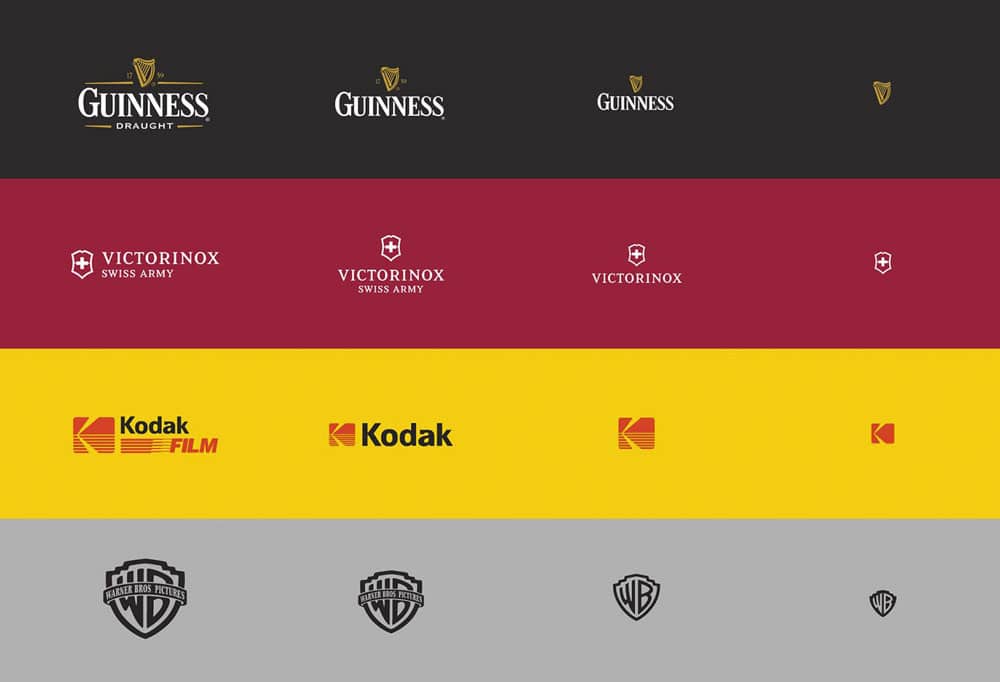
Scalability is an essential factor in online logo design. It refers to the ability of a logo to be resized without losing its clarity and visual impact. A scalable logo ensures that it remains legible and recognisable across various sizes and formats, whether displayed on a website, social media profile, or printed on a business card or billboard.
One way to assess the scalability of a logo is to consider the size range in which it will be used. Logos should be designed to look great in small sizes, such as icons or favicons, and in larger sizes for banners or signage.
Below is a table showcasing the scalability of a logo design:
| Size (in pixels) | Description |
| 16×16 | Used for favicon and browser icons |
| 100×100 | Used for social media profile pictures |
| 500×500 | Used for online banners or ads |
| 1920×1080 | Used for website headers or backgrounds |
| Unlimited | Used for large-scale prints like billboards |
It is essential to create a logo design that retains its clarity and recognizability when scaled down to the smallest size and enlarged for larger formats. The typography, graphic elements, and overall composition should maintain their integrity and be clear.
By ensuring scalability, you can guarantee that your logo will maintain its visual impact and effectively represent your brand across various platforms and mediums. A scalable logo will adapt to different screen sizes and printing techniques, allowing consistent branding and brand recognition.
To achieve scalability, it is recommended to work with vector file formats such as SVG or AI, allowing infinite scalability without losing quality. Avoid using raster images or low-resolution files, as they can result in pixelation and loss of detail when scaled up.
When designing a logo online, it is crucial to prioritise scalability. A scalable logo will ensure your brand can be effectively represented across different sizes and formats, maintaining its clarity and impact. By considering the size range in which the logo will be used and using vector file formats, you can create a logo design that is versatile and adaptable to various platforms and mediums.
4. Target Audience and Brand Image
When designing a logo online, it is crucial to consider your target audience and brand image. The logo will serve as the visual representation of your brand, and it should resonate with your intended audience while accurately reflecting your brand's values and identity.
- Identify your target audience: Before designing your logo, it is essential to understand your target audience clearly. Consider factors such as demographics, interests, and preferences. This knowledge will guide your design choices and ensure your logo appeals to your intended audience.
- Research your competitors: Analyse your competitors' logos in the same industry or niche. This research will help you understand the design trends in your industry and ensure that your logo stands out from the competition while still appealing to your target audience.
- Align with your brand image: Your logo should align with your brand's overall image and identity. Consider your brand's personality, values, and unique selling points. For example, if your brand is modern and innovative, your logo should reflect these qualities through contemporary design elements.
- Consider the emotional connection: A well-designed logo can evoke emotions and create a strong connection with your target audience. Consider the feelings you want your audience to associate with your brand and incorporate design elements that communicate those emotions.
- Choose the right colours and fonts: Colours and fonts are crucial in conveying your brand's message and connecting with your target audience. Different colours and fonts evoke varying emotions and associations. Select colours and fonts that align with your brand's personality and are appropriate for your target audience.
- Keep it simple and memorable: A logo should be simple, clean, and easily recognisable. Avoid cluttering the design with too many elements or complex graphics. A simple and unique logo will be more accessible for your audience to remember and associate with your brand.
- Test and gather feedback: Once you have created a logo design, it is essential to test it with your target audience and gather feedback. This feedback will help you identify any areas for improvement and ensure that your logo effectively resonates with your audience.
Pro Tip: Remember that your logo is vital to your brand's identity and should evolve and adapt as your brand grows. Regularly assess your logo to ensure it remains relevant and resonates with your changing target audience.
Common Mistakes to Avoid in Online Logo Design
When it comes to online logo design, there are several common mistakes that you should avoid. This section will discuss these pitfalls and guide how to prevent them. We will cover various issues, including overcomplicating the design and neglecting brand consistency. By delving into each sub-section, we aim to offer valuable insights that will help ensure your logo makes a lasting impact. So, let's get started and explore the dos and don'ts of creating an outstanding online logo.
1. Overcomplicating the Design
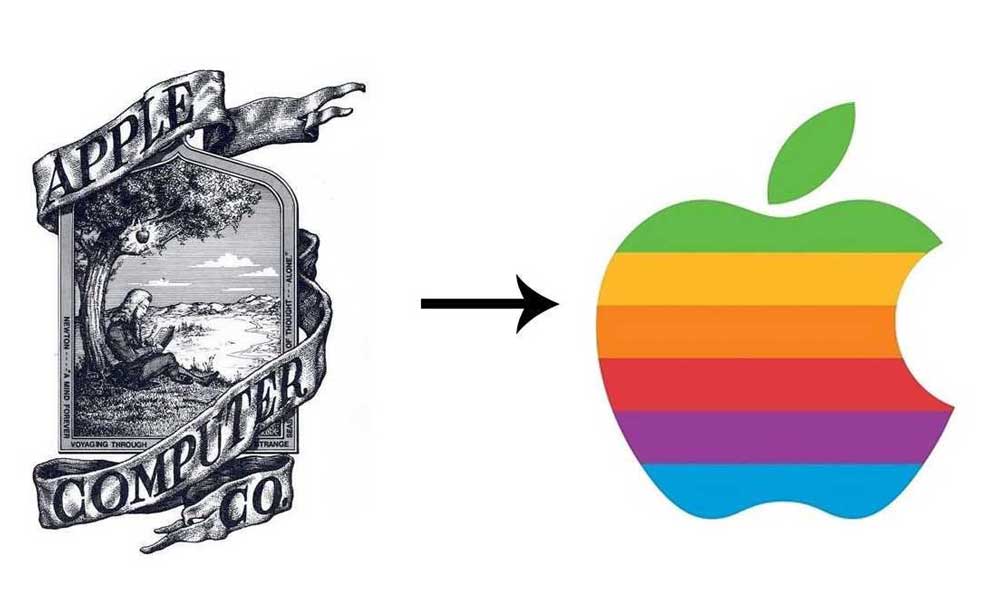
Overcomplicating the design of a logo can lead to confusion and detract from its effectiveness. It is crucial to keep the design straightforward to create a logo that is easy to understand and memorable.
One mistake to avoid is including too many elements or details in the logo. This can make the design cluttered and overwhelming. Instead, focus on the key features representing your brand and conveying the desired message. Keeping the design clean and uncluttered will make the logo more visually appealing and accessible for people to recognise and remember.
Another common mistake is using too many colours in the logo. While colour can be a powerful tool in logo design, using too many colours can make the logo look busy and distract from its intended message. Choosing a colour palette that compliments the brand and conveys the desired emotions or associations is essential. Limiting the number of colours used in the logo will create a more cohesive and visually pleasing design.
Scalability is another factor to consider when designing a logo. Creating a logo that can be easily resized and maintain its clarity and visual impact at different sizes is crucial. An overly complex or intricate logo may translate poorly when scaled down for small items such as business cards or social media icons. Keeping the design simple and using clean lines and shapes will make the logo recognisable and influential at any size.
When designing a logo, it is crucial to consider the target audience and brand image. Overcomplicating the design may not resonate with the intended audience or accurately represent the brand. By keeping the design simple and focused, the logo will be more likely to appeal to the target audience and effectively convey the brand's message and values.
Overcomplicating the design of a logo can have negative consequences on its effectiveness. By keeping the design simple, using a limited colour palette, ensuring scalability, and considering the target audience and brand image, a logo can be created that is visually appealing, memorable, and effectively conveys the desired message.
2. Ignoring Scalability
Ignoring scalability is a common mistake in online logo design that can significantly affect a brand. Scalability refers to the ability of a logo to be resized without losing its visual impact or clarity. Failing to consider scalability can result in a logo that looks pixelated or distorted when it is scaled up or down for different purposes.
One crucial factor to consider is using vector graphics instead of raster images. Vector graphics are created using mathematical equations, allowing them to be scaled infinitely without losing quality. On the other hand, raster images are made up of pixels and can become blurry or pixelated when enlarged.
Another aspect to consider is the level of detail in the design. An overly complex logo with intricate details may translate poorly when scaled down to smaller sizes. It is crucial to ensure that the logo remains recognisable and legible even in its simplest form.
The choice of fonts and typography can impact scalability. Some fonts may become difficult to read when reduced in size, especially if they have thin strokes or intricate letterforms. Choosing a clear and legible font in various sizes is crucial for maintaining the logo's impact.
Ignoring scalability can limit the usability of a logo. A brand may need to display its logo on various platforms, including websites, social media profiles, product packaging, and promotional materials. If the logo is not scalable, it may not fit properly or look unprofessional in these different contexts.
To avoid ignoring scalability, designers should test the logo at different sizes to ensure it remains clear and visually appealing. They should also consider the other platforms and contexts where the logo will be used and design accordingly.
Scalability is a crucial consideration in online logo design. Ignoring scalability can result in a logo that loses its visual impact or clarity when resized. Designers should use vector graphics, simplify the design, choose legible fonts, and test the logo at different sizes to ensure its usability in various contexts. By considering scalability, a brand can have a versatile and practical logo that maintains its visual appeal across other platforms and materials.
3. Using Stock Images

Using stock images in online logo design can be convenient for many businesses. Considering the potential drawbacks and limitations of relying on stock images for your logo is essential.
| Disadvantages of using stock images in logo design: |
| 1. Lack of uniqueness: |
| Stock images are readily available to anyone, meaning other businesses may have access to the same images. This can result in your logo looking generic and needing more originality. |
| 2. Limited customisation: |
| Stock images are pre-made designs that may not perfectly align with your brand identity. Customising them to fit your specific requirements can be challenging, as you are working with a pre-existing design that may need to be edited. |
| 3. Inconsistent branding: |
| Using stock images can maintain a consistent brand image complex. Since these images are available to others, another business may have a similar logo, leading to confusion and dilution of your brand identity. |
| 4. Generic representation: |
| Stock images are often used in many applications, resulting in a lack of specificity and relevance to your business. Your logo should accurately represent your unique products or services, and using stock images may hinder that. |
While stock images may have limitations, they can still be helpful if used thoughtfully and creatively. Here are some tips to make the most out of stock images:
| Tips for using stock images in logo design: |
| 1. Customise the image: |
| Modify and personalise the stock image to make it more unique to your brand. Add elements, adjust colours, or combine multiple images to create something original. |
| 2. Use as a starting point: |
| While stock images should not be the sole basis for your logo, they can be a source of inspiration. Start with a stock image and modify it to match your brand's personality and message. |
| 3. Combine with other design elements: |
| Integrate the stock image into a larger design composition by adding other design elements, such as custom typography or illustrations. This can make the logo more unique and representative of your brand. |
| 4. Consult with a professional: |
| Suppose you are trying to figure out how to utilise a stock image in your logo design. In that case, consider working with a professional designer who can guide you and ensure your logo is visually appealing and unique to your brand. |
While it is essential to be aware of the limitations of using stock images in logo design, they can still be a valuable resource if used strategically and customised to fit your brand's unique identity.
4. Neglecting Brand Consistency
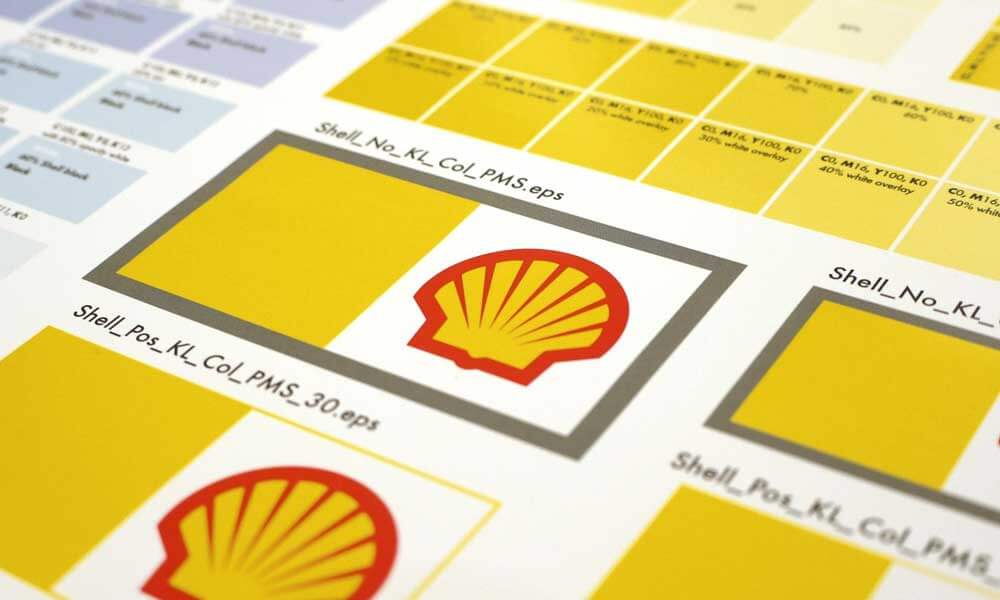
Neglecting brand consistency can negatively affect a company's image and reputation. Consistency in branding is crucial as it helps to establish and maintain a solid and cohesive identity for a business. When businesses neglect brand consistency, it can lead to confusion, inconsistency, and a lack of customer trust.
One consequence of neglecting brand consistency is the loss of brand recognition. A consistent brand identity helps customers quickly identify and recognise a company. This recognition builds trust and loyalty. When a company neglects brand consistency by frequently changing its logo, colours, or visual elements, it becomes challenging for customers to associate these elements with the company. This can result in a loss of recognition and ultimately lead to a loss of customers.
Another consequence of neglecting brand consistency is a lack of professionalism. Consistency in branding conveys professionalism and attention to detail. When a company ignores brand consistency, it can give the impression that they are not serious about their business or do not have a clear vision. This lack of professionalism can deter potential customers and impact the overall perception of a company.
Inconsistency in branding also affects brand trust. When a company is inconsistent with its messaging, visuals, or values, it can create confusion among customers. Inconsistent branding can make customers question the reliability and authenticity of a company. This can lead to a loss of trust, as customers may feel uncertain about the company's ability to deliver on its promises.
Neglecting brand consistency can weaken brand loyalty. Character builds customer familiarity and trust, encouraging repeat business and brand loyalty. When a company fails, brand consistency can disrupt customers' emotional connection with the brand. This can make it easier for competitors to avoid the brand, as the emotional bond between customers and the inconsistent brand weakens.
Companies should establish clear brand guidelines to ensure brand consistency and that all employees and stakeholders adhere to them. This includes logos, colours, fonts, and overall brand messaging procedures. Regular audits and assessments of brand consistency should be conducted to identify and address any inconsistencies. It is also important to regularly communicate and educate employees on the importance of brand consistency and its impact on the business's overall success.
Neglecting brand consistency can harm a company's image, reputation, and customer loyalty. Brand consistency is essential for creating a strong and cohesive identity that builds customer trust, recognition, and loyalty. By prioritising brand consistency and adhering to established brand guidelines, companies can strengthen their brand presence and create a lasting impact in the market.
Some Facts About Logo Design Online:
- ✅ 80% of businesses believe that a professionally designed logo helps them stand out from their competitors.
- ✅ 75% of consumers judge a company's credibility based on their logo design.
- ✅ Online logo design tools have made it cost-effective for small businesses to create professional logos.
- ✅ The average cost of hiring a professional logo designer ranges from $250 to $2500.
- ✅ There are over 10,000 online logo design services available, offering various features and pricing options.
Frequently Asked Questions
What is the importance of a professional logo for my business?
A professional logo is essential as it represents your brand's identity. It helps build brand recognition and trust and sets you apart from competitors.
Why should I get a logo online rather than hiring a local designer?
Getting a logo online offers a broader range of choices, often at more affordable prices. It allows you to access a global pool of talented designers.
What are the steps involved in getting a logo design online?
The typical process includes defining your brand, researching design styles, finding a design platform or designer, providing a design brief, reviewing initial concepts, and finalising the design.
How can I ensure my online logo reflects my brand's identity?
Communicate your brand values, mission, and vision in your design brief. Provide specific examples and ideas to guide the designer.
What types of online logo design services are available?
You can choose from crowdsourcing platforms like 99designs, freelance marketplaces like Upwork, or even use AI-powered logo generators like Canva or Looka.
How do I protect my logo's copyright when getting it online?
Ensure that your contract with the designer or design platform includes clear copyright terms. It's advisable to register your logo with relevant copyright authorities.
What's the average cost of getting a logo online?
Costs vary widely depending on your project's platform, designer, and complexity. Prices can range from as low as $20 for basic designs to several hundred dollars for custom logos.
How long does it take to get a logo design online?
The timeline varies but can range from a few days to weeks, depending on your requirements and the designer's availability.
Can I request revisions to my online logo design?
Most designers and platforms offer revision rounds to refine the design according to your feedback. Ensure this is included in your agreement.
What file formats should I receive for my logo design?
You should request vector formats like .AI or .EPS for scalability and standard formats like .PNG and .JPEG for various uses.
How can I use my new logo effectively for branding purposes?
Utilise your logo on your website, social media profiles, business cards, letterheads, and other marketing materials to ensure consistent branding.
What if I need more than the online logo design I receive?
Check the platform or designer's refund and satisfaction guarantee policies. Many reputable platforms offer satisfaction guarantees.
Can I trademark my online logo design?
Yes, if your logo meets the legal requirements for trademark registration, you can apply for a trademark to protect your brand identity.
